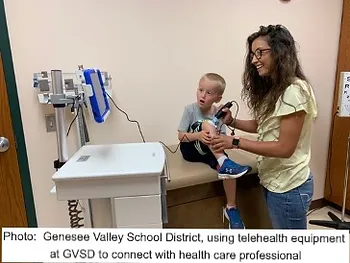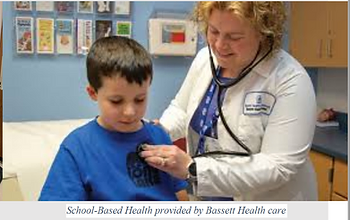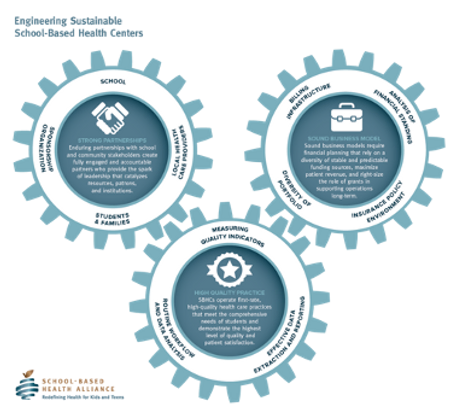
Class 2, Summary of Reading #3:
Meyer F., J. Miggelbrink and T. Schwarzenberg. 2016. Reflecting on the margins: Socio-spatial stigmatisation among adolescents in a peripheralised region. Comparative Population Studies. 41(3/4): 285-320. http://dx.doi.org/10.12765/CPoS-2016-10en
This was a really long reading, and not written in U.S. vernacular, so some words were used differently, and also meant different things, so following the story line was challenging.
The professor had each of us volunteer to read and summarize to the class one of the readings in this course, and I chose this one. As I summarized, I kept an eye and ear on the professor for any signs I may have misunderstood the reading, but did not get that… so this should be fairly correct. If you are a glutton for punishment, I encourage you to read the original article. Let me know if you agree with my interpretation!
The authors found a rural area of Germany dealing with population and economic decline similar to what we are seeing in rural areas in the U.S., and set out to learn about how youth are experiencing this. Specifically, how do negative attitudes about others (outside the community) contribute to negative stigma of one’s own community; and how does this stigma
influence young people’s sense of future and whether they will stay or leave their home region?
The first 13 pages are a thorough examination of the notion of “stigma:” where it comes from, how it might be self-induced, attached to a variety of characteristics including where one lives, impacts individual and group identity, and how that might then impact behaviors and life trajectories.
The researchers conducted focus groups with 15-19 year-olds in a rural, lower income region of Germany experiencing population decline via outmigration and unemployment, leaving a disproportionate elder population. In this area, population declined 20% over 16 years, and looking at just 15-18 year-olds that decline was 57%. The groups were asked about their perceptions of their home region, and about their future plans.
The youth reported awareness that others stigmatize them for reasons that are not true. However, when talking about how they think about their own region, they tended to confirm the stigma.
They would complain that outsiders would see them all as problematic, but that this only applies to a certain subset. They were unhappy that outsiders would generalize these issues to all of them. However, these same youth would do the same thing to city youth – that they witnessed a couple city youth using drugs, so all city people use drugs. Furthermore, this means the whole city was bad.
The kids also talked about a certain area of the city as being worse, with dilapidated buildings. In reality, it did suffer decay and abandonment in earlier years and has since improved. But kids are ascribing dilapidated characteristics now, and applying them to people; run-down buildings/ public housing AND people.
They say parenting and safety is worse in the city than in small villages.
Drug use was an example that came up over and over, with rural students pointing to the city as a place rampant with drugs and drug users. They would base these claims on a handful of personal observations that they then determined were indicative of all the people of the city.
Interestingly, the authors spoke with several adults – experts, teachers, etc. – who confirmed that drug abuse was actually pretty bad in the rural community these youth were from. In fact, the youth seemed to know that others applied this stigma to their area and thus them, but this – drug use – was a commonly used by the rural youth to demonstrate the difference between rural and urban; us and them.
Sometimes however, they would talk about negative aspects of their own region/people, but separate themselves as not part of that group. For example, they talk about drug users among them as “others” who are dumber, lower income, in the worst neighborhoods. Sometimes they would follow this with statements like ‘you just have to do drugs to bear the difficulties of this place,’ and did not seem to recognize the contradiction.
Overall, the youth were making grand claims, then supporting it with marginal evidence (they all carry knives, based on hearsay of one threatened by a knife, then also hearsay of gunshots at night) when facilitator questioned this “really? Everyone?” they found a way to defend that was loosely based in fact, but embellished with rumor. Facilitator could lead them to acknowledge that just because a place is rough doesn’t mean all the people there are evil, but soon after they would go back to making that connection.
The school system in this area includes a more academic school and a vocational school. The researchers conducted a focus group with the academic students, who described the vocational students negatively. The vocational students tended to be more rural because rural areas had fewer schooling resources along with living in a poorer area (fewer resources at home, community) so they TEND to perform at lower levels academically. But the story the academic students created is that the vocational students also behave poorly; not just lousy social skills, but also deviant behaviors such as drug abuse and welfare dependency. So these are rural kids who managed to get into academic schools, talking about rural kids who didn’t. Further, the academic students complain that the vocational school has better technology, as though this somehow made the academic students victims of the vocational students. And these kids could well be their neighbors, I am guessing, but it’s a way these kids can distinguish themselves from “lower class” kids.
During all this, these same issues are present in their everyday lives, including the stigma from outsiders. The authors are calling this deflection.
The authors make numerous attempts to separate out facts from the story they’re telling about the facts, and to illuminate out the contradictions in what they were saying, and while students might acknowledge some of this, they quickly return to their narratives.
The authors conclude that stigma in this context is created from the contributions of several people, and as long as it’s accepted as true, then stories about the causes and maintenance of negative behaviors are created. Further, being stigmatized tends to lead one to create other enemy groups.
The researchers also wanted to know what was driving youth’s decisions about staying or leaving their rural community.
All youth reported thinking about the same issues (people, place, job, wages, etc), but valued them differently:
-
Leavers would talk about a desire for self-fulfillment, but also wanted to escape the negative aspects of their home community – the same negative aspects they said outsiders falsely accused them of in previous discussions. However, they did not seem to recognize this connection
-
Stayers centered their decisions around an actual job offer, or emotional ties to people and place.
In conclusion, these youth created a version of reality to protect themselves from difficulties in their current situation.
-
Social-economic conditions largely inform direction of stigmas.
-
While youth understood there to be stigma placed on them by outsiders, the youth worked to locate the problems outside of their own group.
-
Data is not the principal determinant of whether to stay or leave; it’s what one’s social circle is saying.
-
Stigmas are not determinative, as people may pay heed to them, or not, but they certainly play a role in construction people’s perceptions of self/other, here/there.



